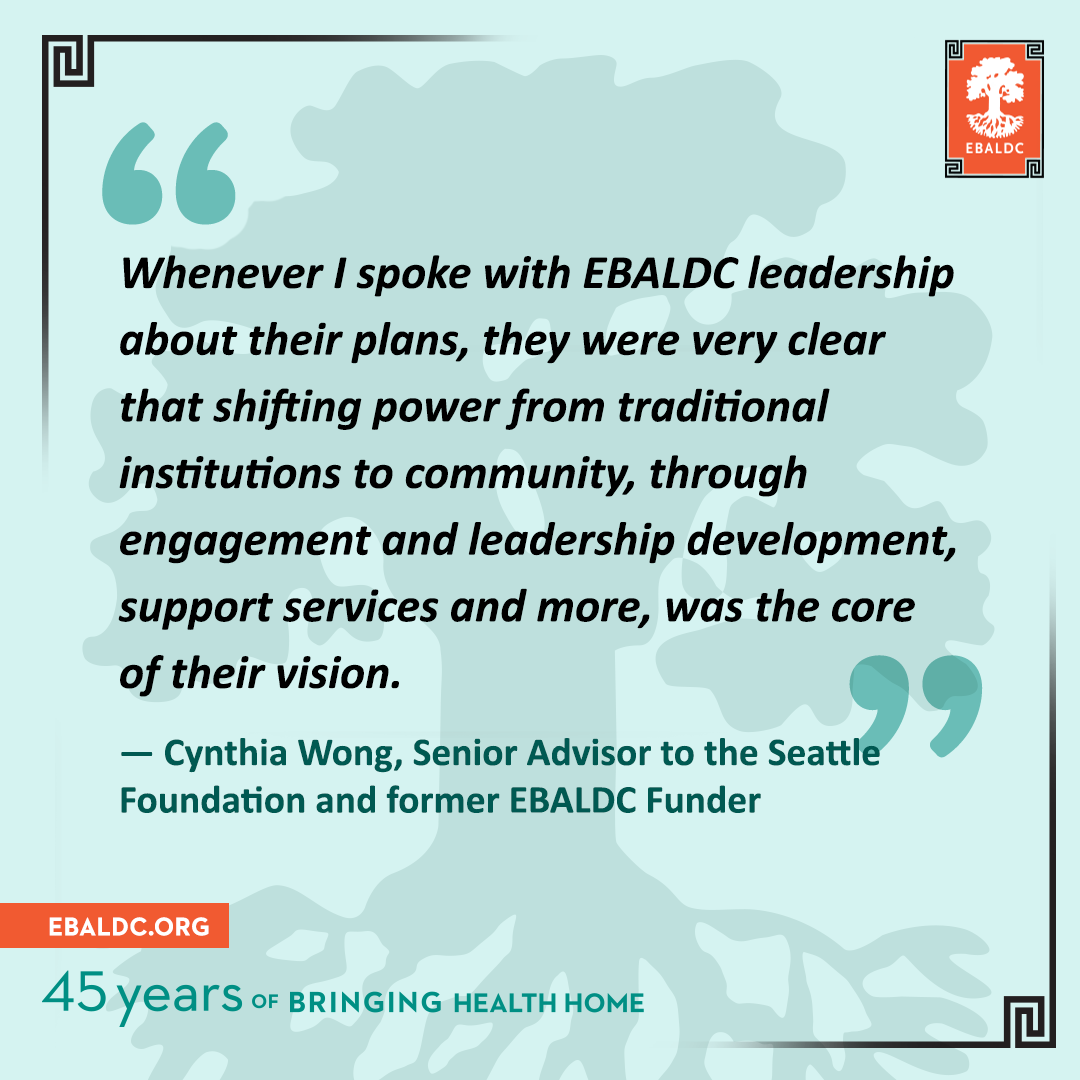Shifting Power from Institutions to Community

45 Stories for 45 Years
Contributor: Cynthia Wong, Senior Advisor to the Seattle Foundation and former EBALDC Funder
During my time with Local Initiatives Support Corporation (LISC), I was touring one of EBALDC’s Housing Acquisition Fund portfolio properties — purchased with the goal of stabilizing rents long term, and increasing the likelihood that residents there could remain in their homes — with an EBALDC staff member to consider whether and how LISC would finance similar projects.
As we toured the grounds, three residents came out on their own to rave about the work EBALDC had done there. They named their property manager and talked about how they did such a great job at the building and how much they appreciated EBALDC’s management.
LISC is all about building the trust and capacity of communities and shifting power to our neighborhoods to make sure they have the voice in important decision-making. From that perspective, my experience touring EBALDC’s building was even more striking.
So much of the work of community development is defined by metrics: how much square footage has been added, how many affordable units, how much commercial space. But what is at least as important, if not more so, are things that can’t be so easily quantified, like the level of community engagement and support a community developer fosters among building residents, tenants and neighbors.
Whenever I spoke with EBALDC leadership about their plans, they were very clear that shifting power from traditional institutions to community, through engagement and leadership development, support services and more, was the core of their vision.
EBALDC’s emphasis on a neighborhood-driven approach is apparent across all their work: in their organizational culture at EBALDC headquarters, at Swan’s Market where you can feel enthusiasm and support from the community, and at their residential buildings. As a funder, I looked to EBALDC as a model for not just developing, advocating, or preserving housing — but incorporating the Healthy Neighborhoods Approach in every aspect of their work.
As EBALDC marks our 45th anniversary, we will be gathering more stories like this one from our friends, family, community members, partners and more stakeholders that have made our impact possible. We would be honored for you to join us:
- To contribute your own story, visit: bit.ly/EBALDC45Stories
- Follow us on social media: @EBALDC
- Visit us online to read the stories: ebaldc.org/category/45-stories
